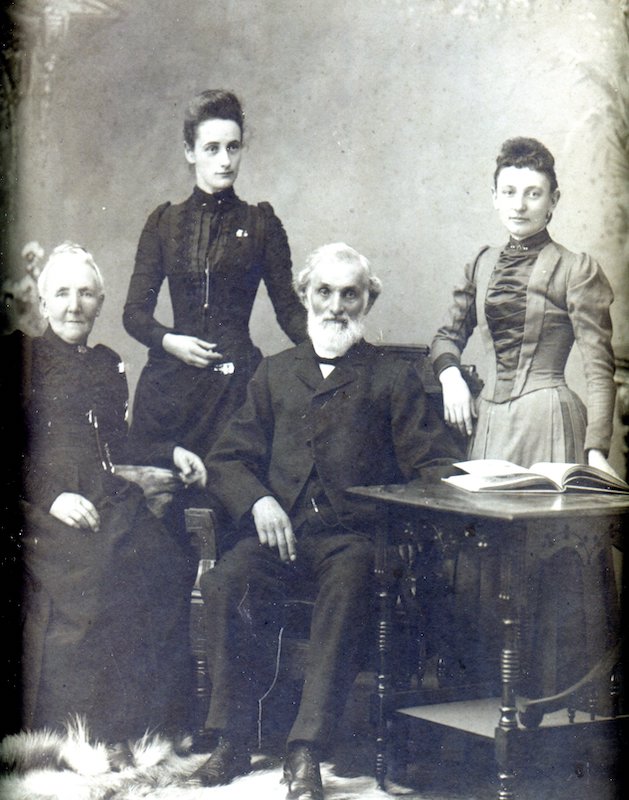In celebration of Earth Day on April 22, below is an excerpt on local horticulturist Charlotte Milliken Hoak from the 2016 Kelley House publication From Maidens to Mavericks: Mendocino’s Women, written by local author, Molly Dwyer.
Hoak was born in 1874 in the wilds of Comptche. She liked to say she was born with two green thumbs. Both of her parents loved growing plants and, on the day of her birth, her father planted seven redwood trees. Charlotte referred to them as her Birthday Grove, and her trees still stand. She was fascinated by the plant life of California and spent a lifetime lecturing and writing articles on its native flora. In 1896, at the age of 22, Charlotte enrolled in the University of California, Berkeley. She received her undergraduate degree in 1900 and, three years later, her Master’s Degree in botany, studying under the head of the department.

Portrait of the Hoak family, c. 1899. Mary Hoak and husband Newman are seated, their daughters Charlotte (on the left) and Carolyn are standing. (Gift of Mary Kuvaja)
Her research was on Mendocino County’s Pygmy Forest, which ultimately she helped save. Located just a few miles inland from Fort Bragg, the Pygmy Forest extends south for about 30 miles. Once known as the Mendocino Barrens, the acidic hardpan soil supports dwarf evergreens—some as small as nine or ten inches high—Mendocino Cypress, Bishop Pine, and Lodgepole Pine. Tucked into this miniature world are huckleberry, ferns, rhododendrons, lilies, and a range of shrubs.
In her capacity as the horticulture chair of the California Garden Club Charlotte put her fascination with the Pygmy Forest to work. In 1950, she began encouraging the club to purchase some of the unique forestland and donate it to California’s state park system. Charlotte wrote extensively about the plants of the forest and the club mounted a drive to raise money. It took almost 18 years, but in September, 1969, acreage adjacent to Van Damme State Park was dedicated as the Charlotte M. Hoak Memorial Pygmy Forest.
Charlotte moved to southern California in 1906, purchasing a home in South Pasadena. She spent 25 years teaching horticulture in the elementary schools of Los Angeles and organic gardening and composting to community groups. She was a columnist for the Pasadena Star-News, advocating the creation of wildflower preserves along the Pacific coast, and her writings became known internationally. John Muir was a friend of hers. Her many accomplishments include the discovery of a new lily in the mountains of southern California, which was named for her. Her undying love of begonias won her numerous awards. At the age of 84 she was named “Miss Horticulture 1958” and, two years later, Horticulturist of the Year. She died in 1967 at 93.
The book about her and other Mendocino women, Mendocino Historical Review Volume XXIX, can be purchased in the museum or on our website; the author’s presentation from May 17th, 2015, is available to watch on the Kelley House Museum YouTube channel.
The Kelley House Museum is open from 11AM to 3PM Thursday through Monday. If you have a question for the curator, reach out to curator@kelleyhousemuseum.org to make an appointment. Walking tours of the historic district depart from the Kelley House regularly.